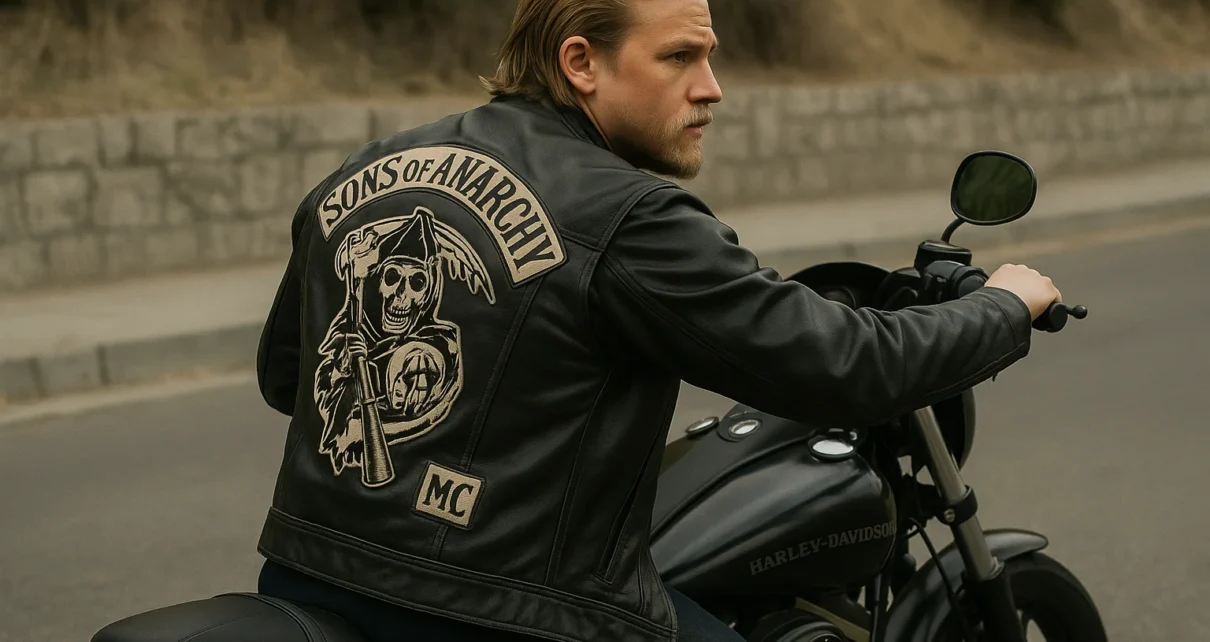There are television characters who disappear after the credits roll, and then there are characters like Jax Teller who remain in memory after the final episode. Sons of Anarchy gave viewers a gritty and unforgettable ride, but much of its cultural impact depends not only on the story but also on the look and feel of its lead. Jax Teller’s wardrobe became the epitome of rebellion, loyalty, and raw individuality. His clothes spoke volumes about who he was and what he stood for. Even brands like Exclusive Leather Jackets have highlighted the way his style carried meaning and influence beyond the screen, proving that this character’s fashion choices were never random but carefully tied to his identity.
In this blog, you will explore how Jax Teller’s iconic outfits captured the rebel spirit of Sons of Anarchy, shaping his identity and leaving a lasting mark on fashion. His wardrobe was more than clothing; it was a reflection of defiance, loyalty, and individuality that continues to inspire fans and influence modern biker style.
The Symbolism of Jax Teller’s Wardrobe
Jax Teller’s clothes were an extension of his soul. The kutte, the iconic vest worn by SAMCRO members, was more than fabric. It represented belonging, loyalty, and a weight of responsibility. Each patch sewn onto it had a story, from the Reaper emblem to the President tag that Jax eventually inherited. Viewers knew that when Jax slipped on the vest, he carried not just himself but the identity of the entire brotherhood. His leather pieces, often seen as Sons of Anarchy Jackets by fans, spoke a different language, one of independence and toughness.
The jackets, by contrast, exhibited that personal edge; the declaration to stand tall in defiance of any storm, unlike the vest that shackled him to the club. The t-shirts and hoodies were equally important; they contrasted against the ferocity of the leather and reminded viewers that beneath the outlaw persona was a serious family man, a father trying to find balance.
The Influence of Biker Culture
Consequently, to define Jax’s style, biker culture would have to be considered. Sons of Anarchy drew heavily on real motorcycle outlaw clubs, and you could tell by their wardrobes. Leather and denim weren’t fashion statements; they were two very old layers of protection bikers have worn on the road. Vests adorned with patches almost show the weight and reality of the storyline. Jax was not dressed to look pretty on TV; his clothes were made to represent a whole lifestyle. He was, quite simply, a paradox, the grittiness of biker fashion really being something to be revered, wild yet following a strong code of loyalty. His clothing became the crossover between entertainment and reality, asserting to viewers that the world of Charming could exist just beyond the screen.
Breaking Down Jax Teller’s Most Iconic Outfits
The audience often refers to the distinct costumes of the Jax Teller style. Among these outfits, the kutte remains unchallenged in popularity as the centerpiece of Jax’s costume throughout the series.
This was the kutte that literally held the stories of the club and its history, combined with the decisions that Jax had taken. His leather jackets heralded presence and authority, whether he was negotiating with his enemies or riding off in the moonlight. The denim jeans were rugged and worn, a forthright approach toward clothes with no glam remarks incorporated. Anyone who could afford the luxury of eyeing these clothes as ornamental was poor in spirit. For outside club business simple shirt or a hoodie-things that will still hint at a softer, more relatable side.
Together, these pieces of clothing made a composite portrait; without any added help from dialogue, they told viewers exactly who Jax was.
The Rebel Spirit in Every Detail
Each detail of Jax Teller’s outfits conveyed rebellion; he did not need glamorous logos or too many accessories to sport his look. It was a terse, minimalist yet strong, and obviously simple look. The outfits communicated a great deal about someone who is far removed from mainstream fashion: neutral tones, distressed fabrics, and an almost shabby finish. They rejected conformity and celebrated individuality, just like the character himself. His fashion projected rebellion against authority, exuding a sense of free will that appealed to a very particular kind of viewer who loved his rebel edge. The name of the rebel spirit was emblazoned in the seams, leaving fans to remember that fashion is much more than a piece of cloth; it is about what the piece of cloth stands for.
How Fans Keep Jax Teller’s Style Alive
Even though it has been many years since the show ended, fans are still bearing Jax Teller’s look in their own closets. Replicas of jackets and vests sported in the series are still available for sale, with many wearing them in cut-off styles to feel just that much closer to the outlaw spirit. Edits, tributes, and recreations of his looks flood onto social media, showcasing many of his evergreen iconic outfits. Sons of Anarchy has always been a major presence in cosplay, with intricate costumes, proving once again that the character is steeped in cultural relevance.
What is most interesting is how his fashion became more than television memorabilia. For many fans, it turned into a lifestyle statement, a way to express individuality and loyalty while channeling the edge that Jax Teller made iconic.
The Role of Outfits in Character Development
Jax’s wardrobe had its own story that contributed to the character development throughout the entire show. In earlier episodes, his clothing was rough, youth-oriented, and denims, T-shirts, and, of course, that kutte with which he was unavoidably tied to the club. In the progression of seasons, Jax’s gradual involvement in responsibilities began to show changes in his attire as in subtle signs marking him towards more experience as a leader. At this time, his jackets were sharper; he held himself in a way of commanding demeanor; and his presence began to have that intimacy of someone battle-hardened but at the same time wrestled with his own conscience.
By the end of the series, there was almost this metaphorical layering of the burden he carried in his clothes, which were an amalgamation of the same rugged standards elegantly tailored in a darker tone. Thus, the style changes mirrored the growing evolution, presented onscreen, in words and actions, of this man.
Cultural Impact of Jax Teller’s Style
Jax’s style ripples were very much felt worldwide beyond Sons of Anarchy. Fans everywhere began to incorporate its influences into their wardrobe choices. Worn leather jackets came back in style. Denim worn with biker boots had become the best form of expression for independent spirits. Countless replicas of the kutte were made, with fans wearing patches compatible with the fictional SAMCRO design. The TV character’s wardrobe was discussed extensively on online forums and social networks, soon turning these outfits into cultural symbols that went beyond the television screen. A wardrobe that began on TV has turned into a cultural phenomenon wherein this outlaw appeal and raw authenticity are coded as Jax Teller’s style.
Why Jax Teller’s Outfits Still Matter Today
Well, after the show ended its last episode, Jax Teller’s outfit is still influencing. This particular look that has morphed has taken the shape of a fashion story. Those newly on board with the show, part of its younger crowd, are quite obviously just as affected now as natal audiences were during the first run. Sons of Anarchy has gone off the air at the show’s end, but far from it, it remained alive through its imagery in pop culture.
The appeal in Jax’s clothing is in its actuality. They were never made to show off style, but to show real life, which hence keeps resonating in very much the same way today. They remind us that when it comes to fashion, the most precious is that of being honest with one’s and one’s beliefs, rather than following a trend for just that moment in time.
Also Read: Syna World Clothing: A Streetwear Revolution
Conclusion
Dress up a Jax Teller! It’s not just about finding a spot in a few finely cut leather short jackets or personifying the rugged elegance of the perfect jeans. Gradually, one will have to learn how these attires connect to the character; it serves as the mirror glass he uses to view his own story. His apparel largely told his story-more on rebellion, brotherhood, and the choices that made way for his journey. The kutte to show loyalty, jackets that represented independence. Everything he wore had something to say.




